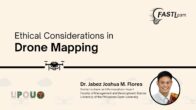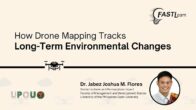How Walking Research is Formed?
Over the past several decades, as the world has become more global and interconnected, environmental challenges have led to a rise in human migration and in people’s forced
movements due to climate crises, mass extinction and political instability. Many of these migrations have been carried out on foot.
Yet, such involuntary movements have been fostered in part by the exponentially growing popularity in mobility such as tourism and leisure pastimes such as hiking. Citizens of both ‘Global North’ and ‘Global South’ attend pilgrimages, take part in group walking activities, and visit sites such as high mountain ranges, national parks and protected areas.
What is the One By Walking Network?
In The One by walking network, we are interested in this continuously evolving interplay and connections between different types and experiences of mobility through walking. What brings together this network is an interest in the consequences within the empirical fields of walking, arts practice, geographic mapping of movement, and environments important for well-being.
We are developing new cognitive as well as practical tools that can be used to understanding contemporary human cross-cultural practice. Such tools are also urgently needed for addressing critical environmental and social challenges.
What are the advantages of walking research?
One particular advantage with a walking method is that empirical data collection is possible
both about informants themselves as well as the places and landscapes that are walked.
This makes it possible to discover new types of connections and layers of reality. In some
fields within the humanities, such as new-materialism, they have developed their own novel
walking methods of studying the place of humans within the more-than-human-world.
Walking research also engage in conversation about how walking itself changes the research conditions. Walking research investigates how layers of meaning are discovered through multisensory connections between walker and the particular place that is walked.
Walking in research can also be highlighted as a commodity, such as a travel experience. Walking is in many situations connected to commercial products, as trekking gear, apps, and tech gear such as pedometers measuring health benefits, or even as a way of ‘gaming’ in the landscape. We also find studies of walking, queerness, and disability, and studies on walking and heritage.
New methods and perspectives that focus on walking research are often innovative and novel specifically because they combine ethnographic, or even quantitative research methods, with perspectives from critical theory such as cultural-, gender-, performance, or narrative studies – all humanities specialties.


























